A couple of years ago I fished a large chunk of wood out of the river. It had a very satisfactory heft, oblongularity and poise. A piece of timber solid not only in body, but in character. In short: a perfect doorstep.
I spotted it floating in a weir and thought ‘that would make a fine doorstep’. We shan’t dwell on the story of how I hoisted it out of the river and, in exchange, lost my brand new, favourite, and first ever, pair of sunglasses. Suffice it to say, it took a length of rope, a boat hook and about ten minutes (it also took something else, but I can always get another pair next time I visit Massachusetts).
The fact that it was floating meant that it can’t have been completely water-logged. However, it must have been in there quite some time, as it was bastard heavy and took quite a few goes to carefully orientate, lassoo and then draw up. It bobbed around somewhat in the current, evading capture, like a slippery thing. I came to the conclusion that I can’t have been the first to attempt to lure it into captivity. Who knows how many had tried to coax it out of the water, and how many it had evaded. How many pairs of sunglasses had it claimed? Indeed, had it escaped captivity in another life, and, when the river was running fast and high, slipped away under cover of darkness? It could have come from as far as Lechlade.
That day I lost my sunglasses but I gained a very heavy doorstep. Weight is an important quality in a doorstep: it is imperative that it not only gives a good first impression of stability, by way of assuring new visitors to the boat that they will find a sound footing during their stay, but also to stop it blowing away. I can’t say how much of the weight was wood and how much water. I didn’t take great pains to find out, instead, installing it on the threshold of my boat, ready to greet visitors.
Often, it rains. There would have been no use drying it out. So I left it out, untreated, for a couple of years. When it rained, it was wet. When the sun shone, some of it started to dry out.
Recently, during the worst excesses of an uncharacteristically damp and warm winter, I noticed the first spots of mould. “What impression,” I asked myself, “does a mouldy doorstep give?”.
So I placed it in the shower and washed it. I rinsed and scrubbed, and filthy black water eventually gave way to murky water. After a while I concluded that it was appropriately exfoliated (shower spattered but not entirely irredeemable) and took it to dry in front of the fire. I didn’t want to dry it out too quickly, as it already had a few splits. I wanted to preseve its character, not compound it.
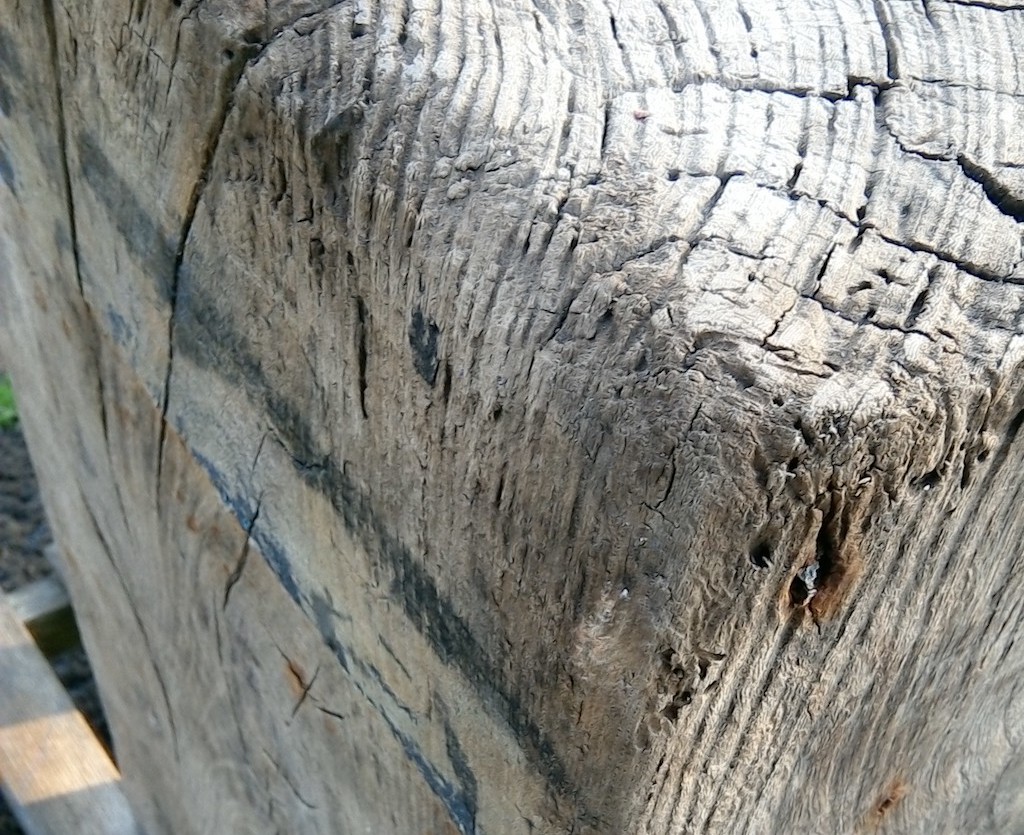
As it dried out, I pondered what to do next.
It took weeks.
My quandry was this: Here we have a very large block of wood. If I don’t protect it, it will immediately soak up water and rot again. It is well weathered, and has a few deep cracks and some mild warping. My tin of yacht varnish won’t do, as I have no hope of painting it into all the cracks and grains. Even if I could (and we’ve established that I couldn’t), the smallest gap would hoover up water immediately. Besides, I find the prospect of a varnished doorstep mildly distasteful.
What I wanted was a drying oil. Danish oil, or linseed perhaps. The problem with that, as with varnish, is that it probably wouldn’t soak in far before the outside cured, leaving a dry centre, just waiting to soak up water. And once the outside had sealed, it would be very difficult to dry out again.
I contacted my friend Phil Bleazey. As someone experienced in both the construction of metres-long engine journals for huge industrial ships and of very fine whistles, flutes and recorders, I thought he’d have some useful advice. Indeed he did: raw linseed oil, mixed 50/50 with pure natural turpentine. The idea being that the turpentine will dissolve the linseed oil and allow it to penetrate. The best térébenthine, he said, comes from France. Using raw linseed oil rather than boiled means that it will dry nice and slowly, avoiding a cured exterior but uncured interior.
So I took most of his advice and bought a litre of English turpentine and a litre of linseed oil and annointed the threshold.
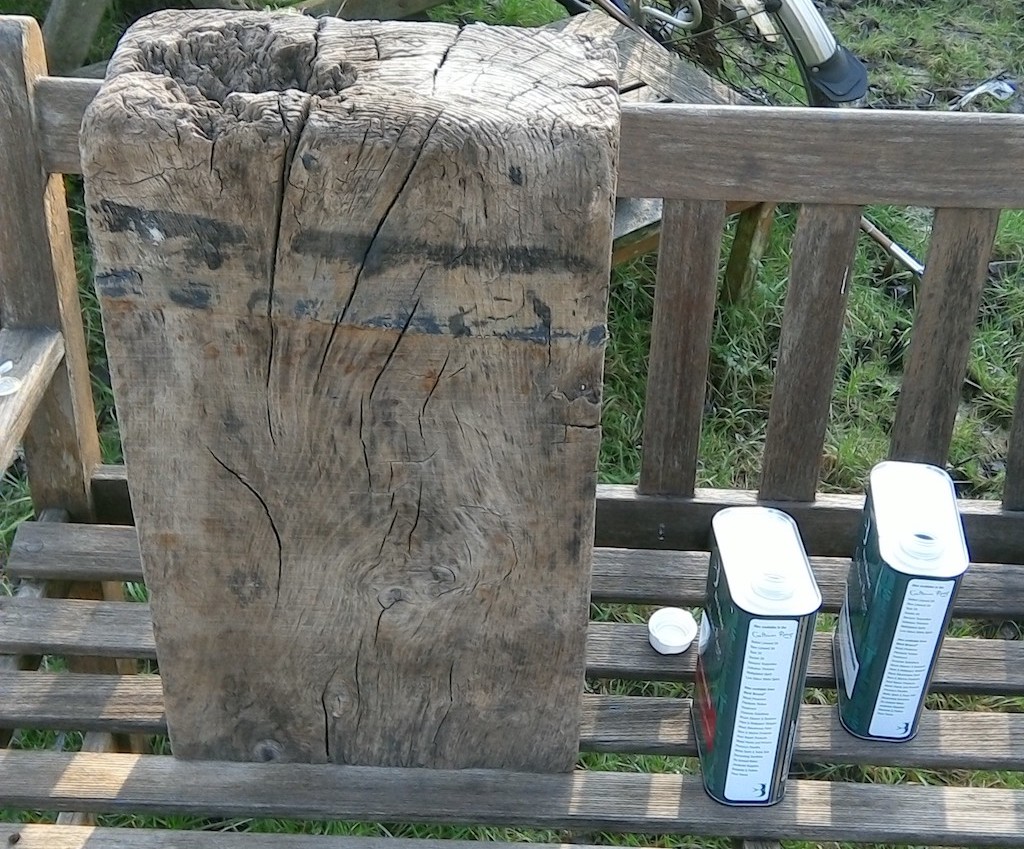
I carefully placed it in a plastic binliner.

I carefully dribbled the mixture onto the surface and into all the cracks, textures, nooks and crannies.
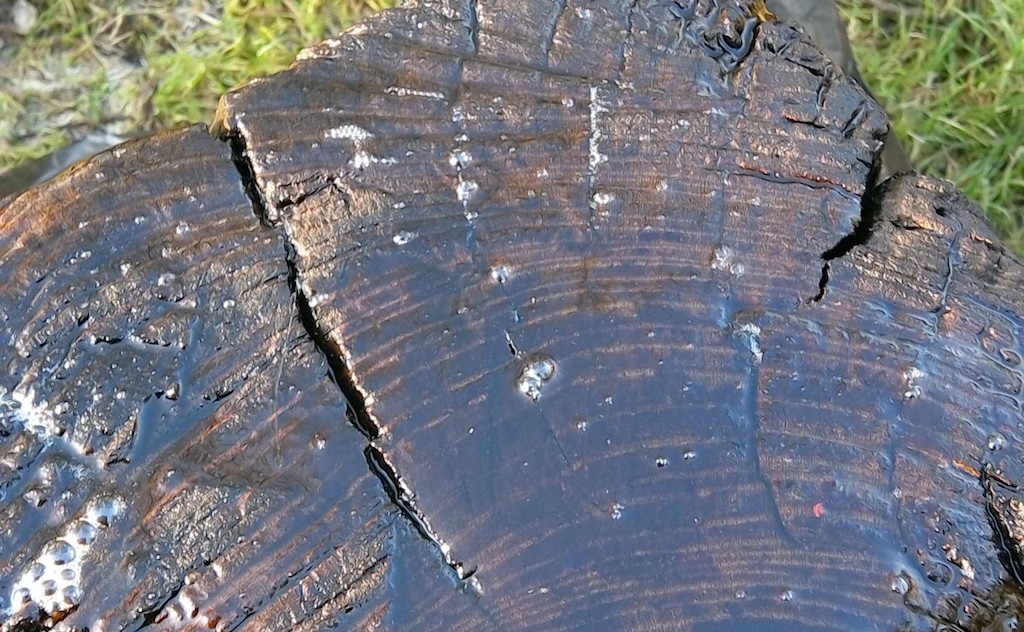
I carefully directed the liquid into all the places where water might like to re-stablish itself.
It soaked in immediately. This was a thirsty piece of wood.
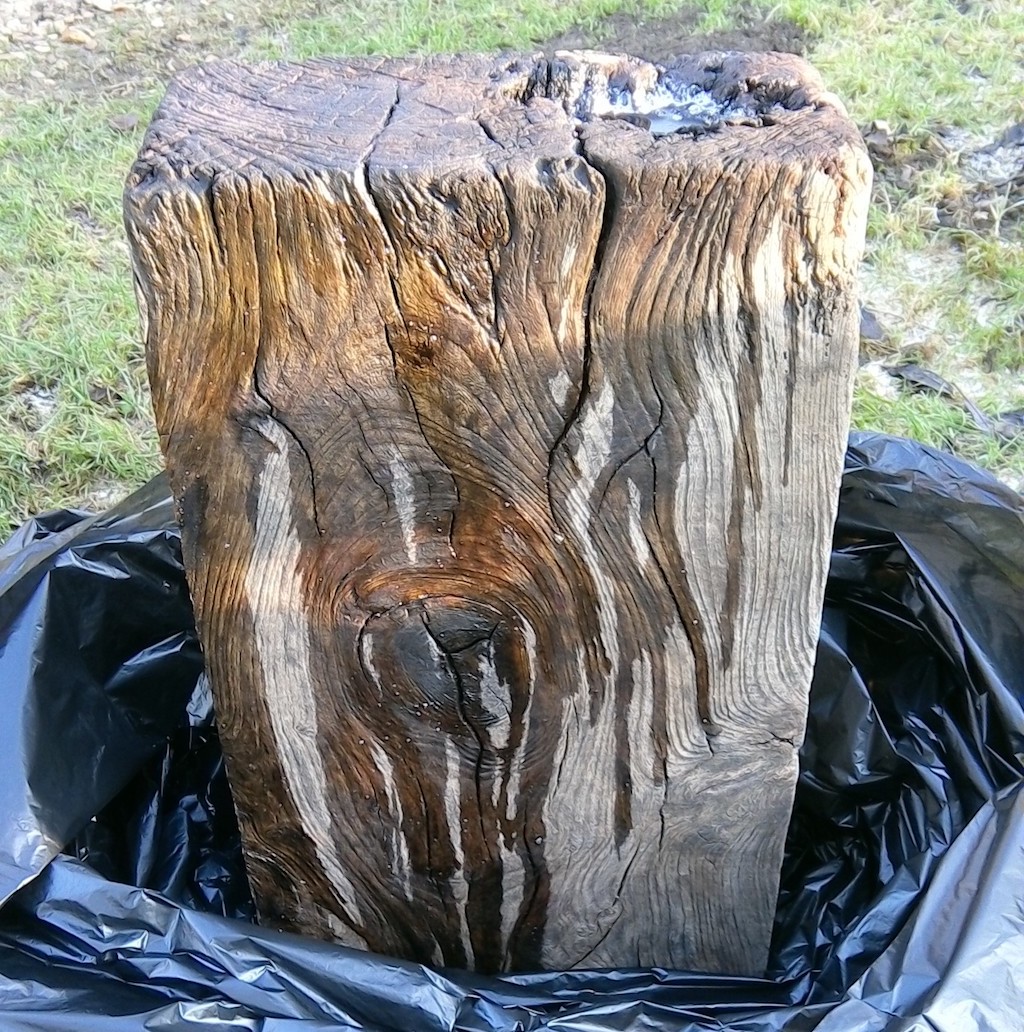
I encouraged it deep into the knot-holes, allowing the air to bubble out before putting more in.
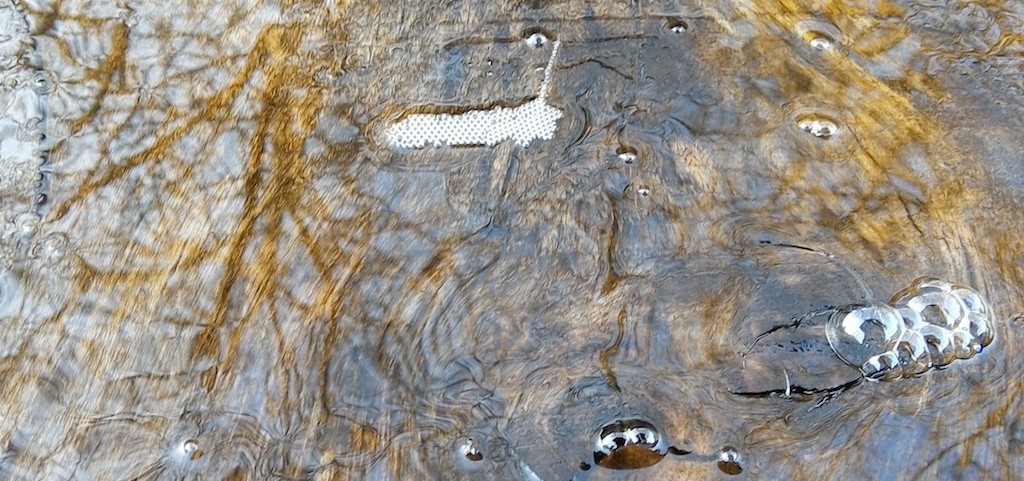
Meticulously, I ensured that it penetrated every pore.

That every square quarter-inch was covered.
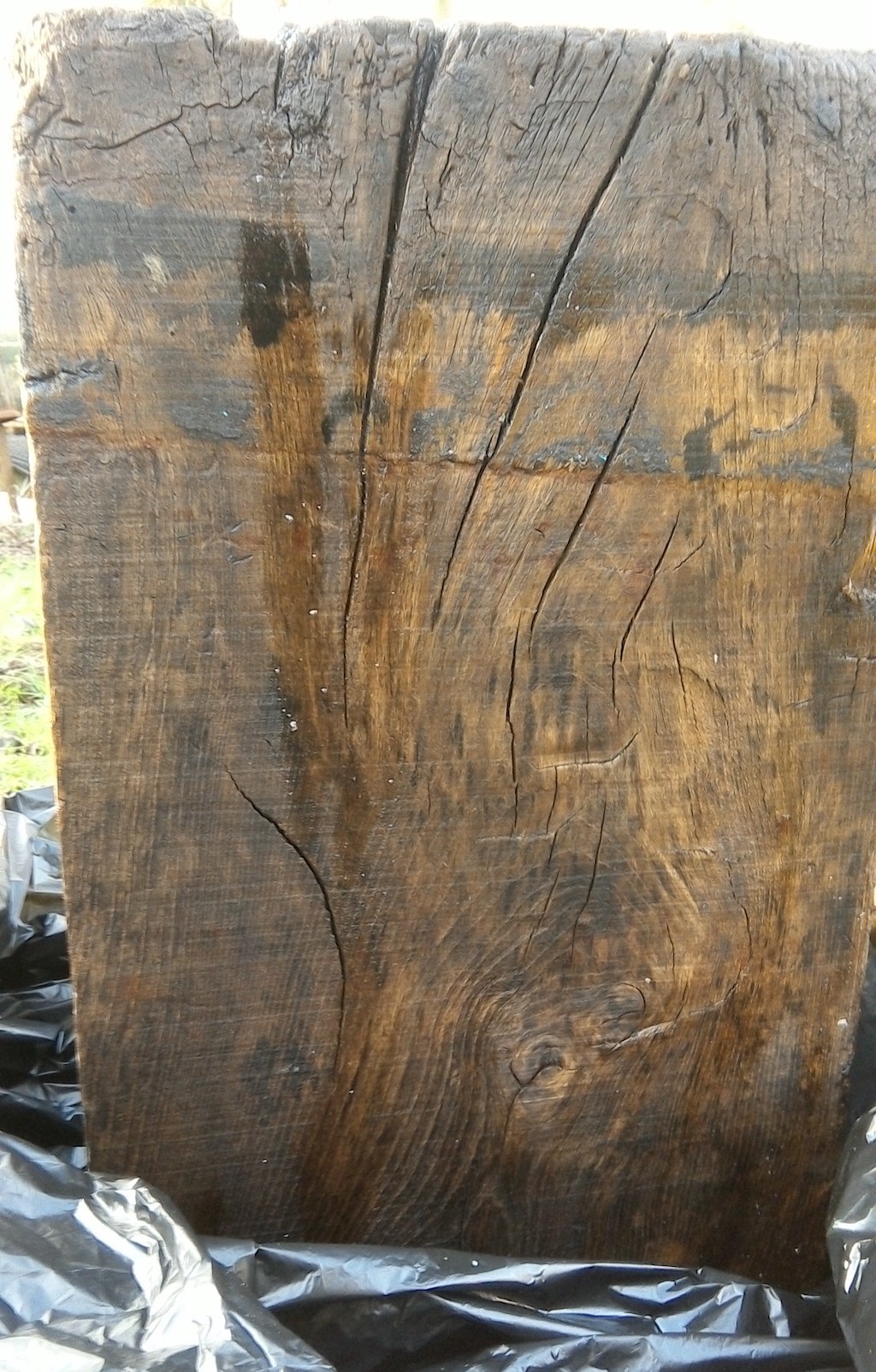
Then I chucked the rest in.
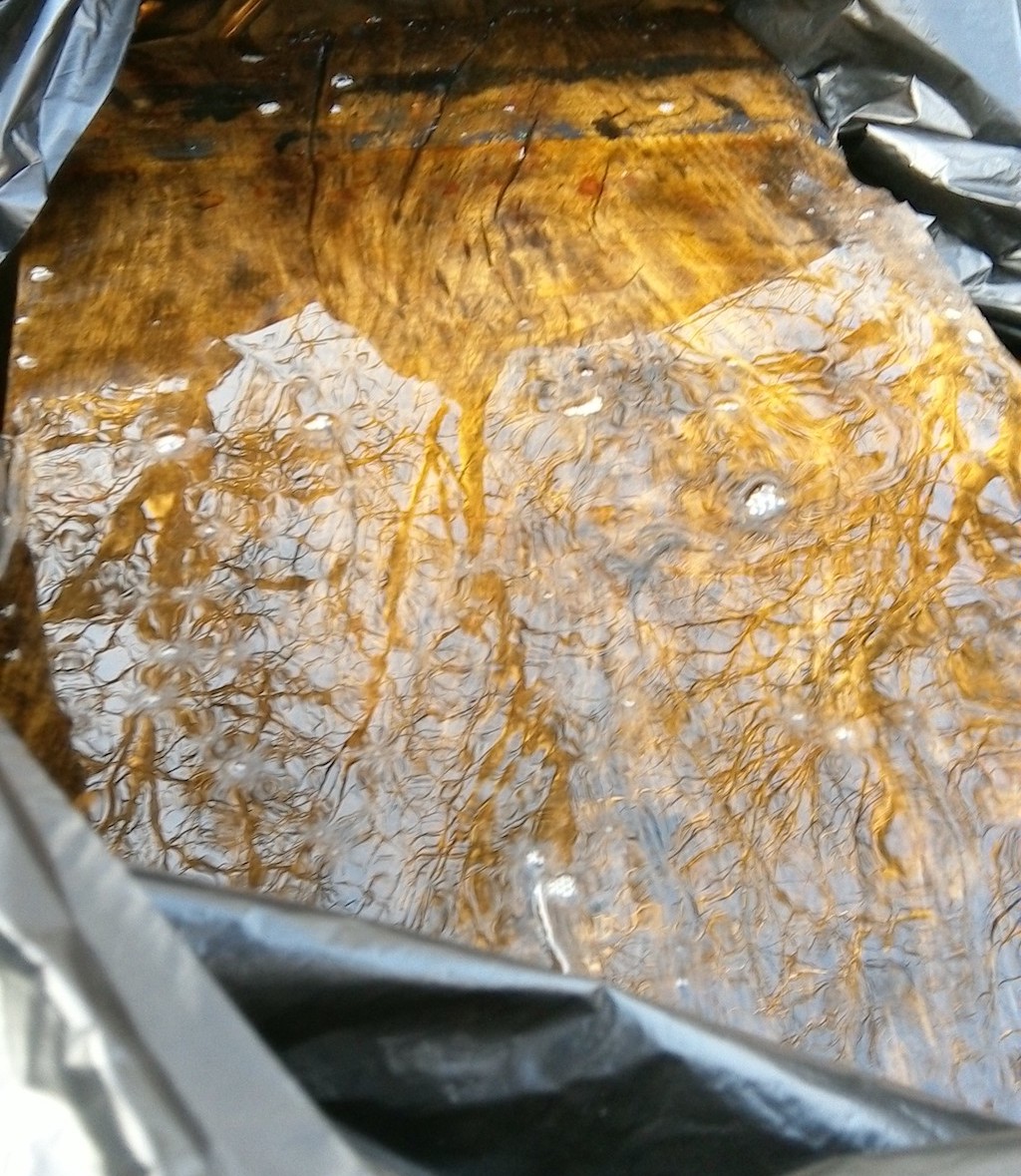
There was some liquid left at the bottom. I left it to soak into the end-grain.
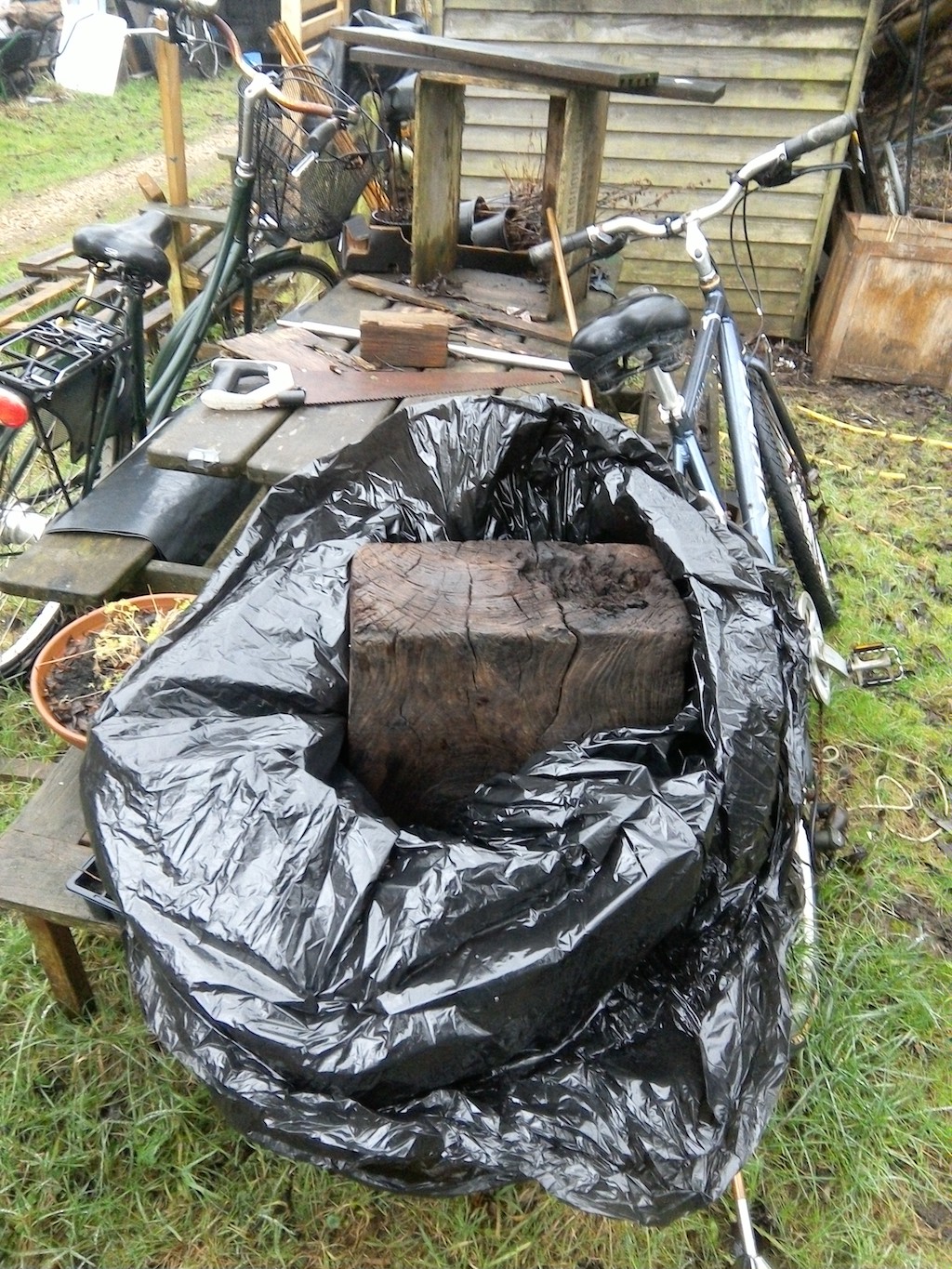
I sealed the bag and waited, occasionally rotating the obverse for even an soak.
A few days later I opened it up.
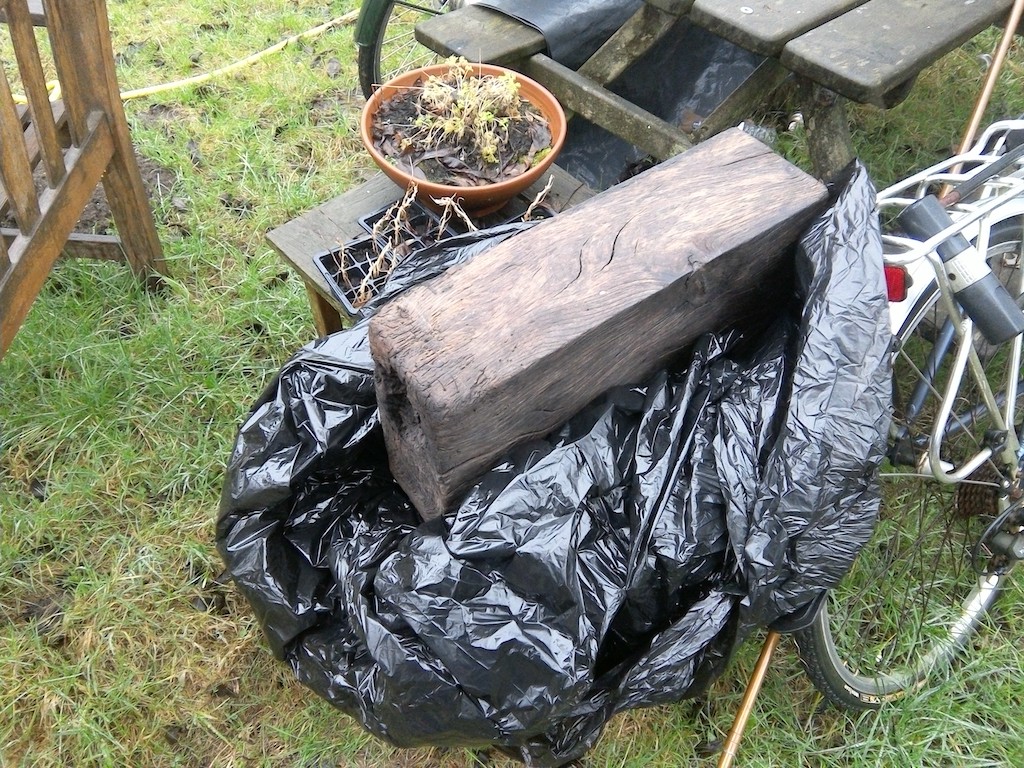
It had drunk it all up. Right up. And turned a darker shade. As I think any of us would, spending a few days in a bin-liner under such circumstances, turpentine or térébenthine.
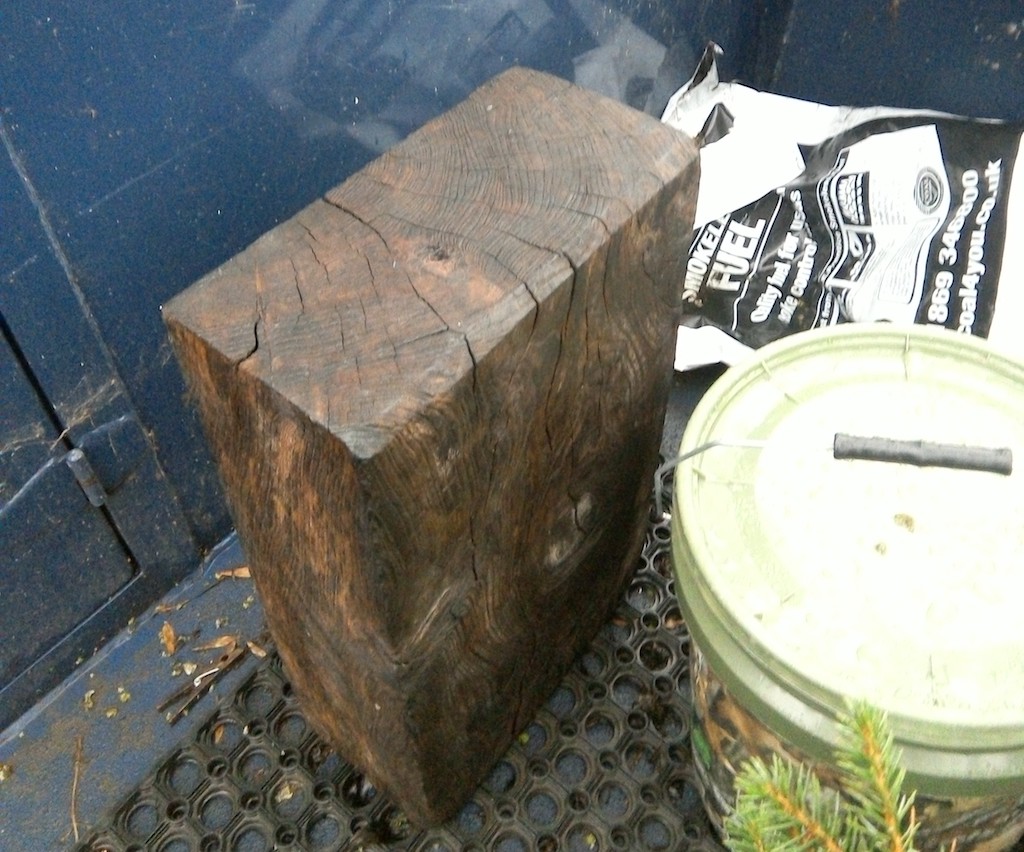
So I bought another litre of linseed oil and did the same thing.
The scent of turpentine mixed with linseed oil was delicious. I resisted the urge to bring it into the boat to let it dry out. My wife and I told ourselves that it was good enough to be able to go outside whenever we wanted to sniff it, and that however enticing the idea, the appeal of a large concentration of turpentine vapour hanging around in the boat might quickly pale. That and the biblical but very real prospect of waking up to a blazing firey block of wood soaked in volatile organic combistibles. Linseed oil-soaked-rags are known to spontaneouly combust and claim entire sheds.

The morning after, it had absorbed a huge amount of the stuff.

I think two litres of linseed oil is quite enough; I didn’t want a gluttonous gargoyle welcoming visitors.
And there it stands. You probably wouldn’t know it to look at it, but it’s been on quite a diet. It’s been through cold turkey. It’s been completely dried out and then bathed.
And if escapes again, I’m pretty sure that this time it will sink. It has claimed its last pair.